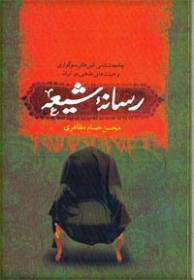The Shi’a Media

Throughout Shi’a history many religious, political, and military leaders have tried to reproduce the epic—deeply imprinted in Shi’a collective memory—to advance their objectives. In contemporary history, Iran’s 1979 Islamic Revolution, the 8-year war against Iraq, and the 2009 Green Movement protests are the most significant cases.
“The Shi’a Media”, a book authored by Mohsen Hesam Mazaheri (original title “The Shi’a Medium, Sociology of Mourning Rituals and Religious Communities in Iran; With a Focus on Post-Islamic Revolution Era”) and published by the Islamic Development Organization, is a comprehensive work that admirably attempts to do so and delves into Ashoura and the inception and development of mourning rituals in Iran, with an “analytical, causal and functional” approach (p. 2). From the first century of Islam to the medieval ages to the age of Pahlavi and the rule of Islamic Republic, the author probes the impact of cultural, social and political developments on mourning rituals.
The first chapter of the book, “The Analytical History of Establishment, Development and Continuation of Religious Mourning Rituals and Gatherings” provides the reader with a historical background of mourning ceremonies held in commemoration of the martyrdom of Imam Hussein; from the early years after his death to the age of the Islamic Republic. The second chapter, “General Concepts”, provides an outline on basic concepts of mourning rituals in Iran, focusing on issues such as the meaning of faith and being faithful, religious communities and congregations (the hey’ats): their function, organization, audience, literature and functionaries.
The third chapter, “A Taxonomy of Religious Communities”, categorizes the post-Revolution hey’ats based on two fundamental factors: organization and audience. Type, durability, location, history and coverage are key elements of the former factor while gender, age range and social base are some constituents of the latter. Based on these factors, religious communities fall under traditional, wartime revolutionary, postwar revolutionary and popular categories. The author then studies each type of hey’at according to their function, organizational structure, audience, faith model, patrons, maddahi (a style of singing religious hymns) and literature. A sub-category, quasi-communities, is also introduced in the eighth chapter. A photo gallery is appended to the book as a visual representation of the author’s arguments.
Details
Persian Title: رسانه شيعه، جامعهشناسى آئينهاى سوگوارى و هيئتهاى مذهبى در ايران
Author: Mohsen Hesam Mazaheri
Publisher: Islamic Development Organization (Persian: سازمان تبليغات اسلامى)
ISBN: 978-964-304-285-1

